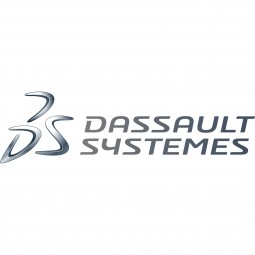Customer Company Size
Large Corporate
Region
- Europe
Country
- France
Product
- 3DEXPERIENCE platform
- Perfect Shelf Industry Solution Experience
Tech Stack
- Cloud-based technology
- Virtual technology
Implementation Scale
- Enterprise-wide Deployment
Impact Metrics
- Revenue Growth
- Brand Awareness
- Customer Satisfaction
Technology Category
- Platform as a Service (PaaS) - Application Development Platforms
Applicable Industries
- Consumer Goods
- Retail
- Food & Beverage
Applicable Functions
- Sales & Marketing
- Product Research & Development
Use Cases
- Retail Store Automation
- Supply Chain Visibility
- Demand Planning & Forecasting
Services
- Cloud Planning, Design & Implementation Services
- Software Design & Engineering Services
About The Customer
General Mills France is a subsidiary of General Mills, a world-leading food company. The company is known for its Häagen-Dazs premium ice cream brand among other food products. The company is constantly innovating and expanding its product line to meet the changing demands and preferences of consumers. In this case, General Mills France wanted to capitalize on the growing trend of snacking by introducing a new, more compact and easier-to-eat version of its Häagen-Dazs ice creams. The company's decision to launch this new product line was based on two years of consumer market studies, reflecting its commitment to placing the consumer at the center of its product strategy.
The Challenge
General Mills France, a subsidiary of a world-leading food company General Mills, wanted to increase its share of the ice cream market by expanding its Häagen-Dazs premium ice cream brand to respond to consumers’ increased inclination for snacking. The company needed to design the most efficient and innovative merchandising strategy to launch its expanded line of Häagen-Dazs ice cream. The key to success was innovative merchandising. The company engaged with major French retailers to implement the most effective way to position and merchandise its products to maximize category growth and brand revenue.
The Solution
To design the most efficient merchandising strategy tailored to each retailer, General Mills France adopted Dassault Systèmes’ 3DEXPERIENCE platform and its Perfect Shelf Industry Solution Experience. The company used virtual technology from Perfect Shelf to collaborate with retailers and develop a new vision for this line of products by defining the best product, category, and shelf-space strategy. The cloud-based version of Perfect Shelf was chosen because it was faster to deploy, offers greater flexibility, and all support is included in the price of the offering. With Perfect Shelf, General Mills France was able to come up with different merchandising options for its new Häagen-Dazs line adapted to the look and layout of each store.
Operational Impact
Quantitative Benefit

Case Study missing?
Start adding your own!
Register with your work email and create a new case study profile for your business.
Related Case Studies.
.png)
Case Study
Improving Vending Machine Profitability with the Internet of Things (IoT)
The vending industry is undergoing a sea change, taking advantage of new technologies to go beyond just delivering snacks to creating a new retail location. Intelligent vending machines can be found in many public locations as well as company facilities, selling different types of goods and services, including even computer accessories, gold bars, tickets, and office supplies. With increasing sophistication, they may also provide time- and location-based data pertaining to sales, inventory, and customer preferences. But at the end of the day, vending machine operators know greater profitability is driven by higher sales and lower operating costs.

Case Study
The Kellogg Company
Kellogg keeps a close eye on its trade spend, analyzing large volumes of data and running complex simulations to predict which promotional activities will be the most effective. Kellogg needed to decrease the trade spend but its traditional relational database on premises could not keep up with the pace of demand.

Case Study
HEINEKEN Uses the Cloud to Reach 10.5 Million Consumers
For 2012 campaign, the Bond promotion, it planned to launch the campaign at the same time everywhere on the planet. That created unprecedented challenges for HEINEKEN—nowhere more so than in its technology operation. The primary digital content for the campaign was a 100-megabyte movie that had to play flawlessly for millions of viewers worldwide. After all, Bond never fails. No one was going to tolerate a technology failure that might bruise his brand.Previously, HEINEKEN had supported digital media at its outsourced datacenter. But that datacenter lacked the computing resources HEINEKEN needed, and building them—especially to support peak traffic that would total millions of simultaneous hits—would have been both time-consuming and expensive. Nor would it have provided the geographic reach that HEINEKEN needed to minimize latency worldwide.

Case Study
Improving Production Line Efficiency with Ethernet Micro RTU Controller
Moxa was asked to provide a connectivity solution for one of the world's leading cosmetics companies. This multinational corporation, with retail presence in 130 countries, 23 global braches, and over 66,000 employees, sought to improve the efficiency of their production process by migrating from manual monitoring to an automatic productivity monitoring system. The production line was being monitored by ABB Real-TPI, a factory information system that offers data collection and analysis to improve plant efficiency. Due to software limitations, the customer needed an OPC server and a corresponding I/O solution to collect data from additional sensor devices for the Real-TPI system. The goal is to enable the factory information system to more thoroughly collect data from every corner of the production line. This will improve its ability to measure Overall Equipment Effectiveness (OEE) and translate into increased production efficiencies. System Requirements • Instant status updates while still consuming minimal bandwidth to relieve strain on limited factory networks • Interoperable with ABB Real-TPI • Small form factor appropriate for deployment where space is scarce • Remote software management and configuration to simplify operations





